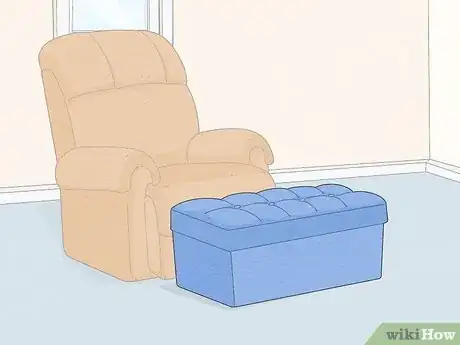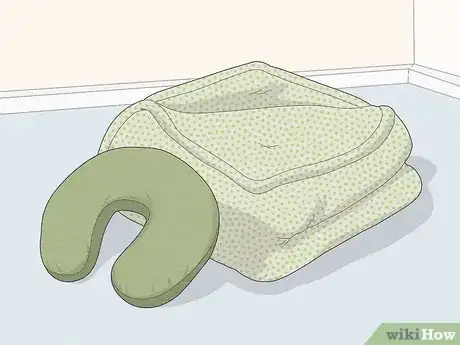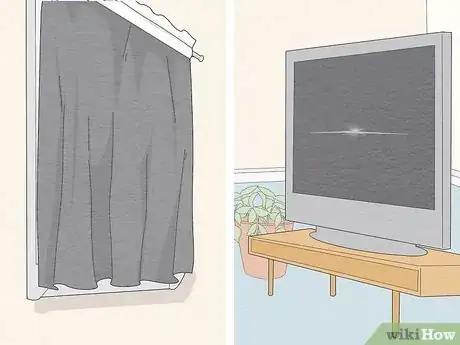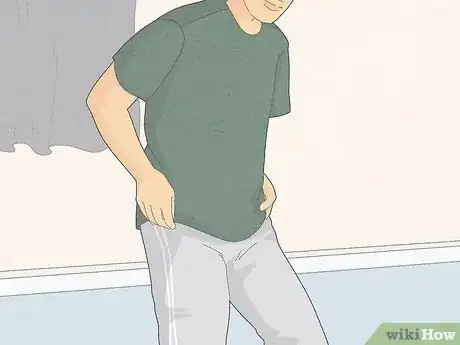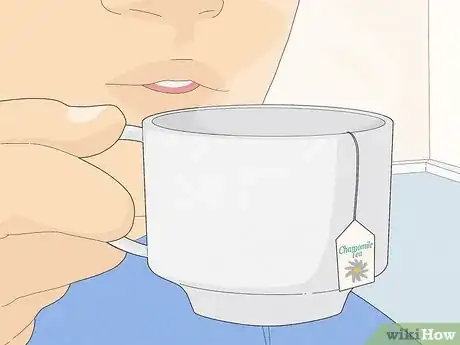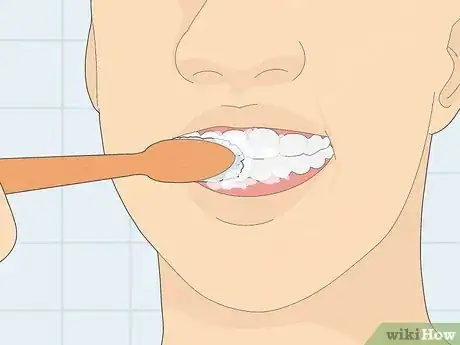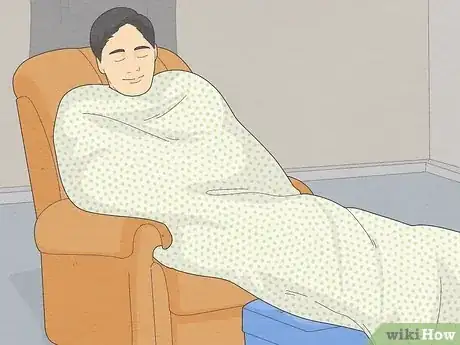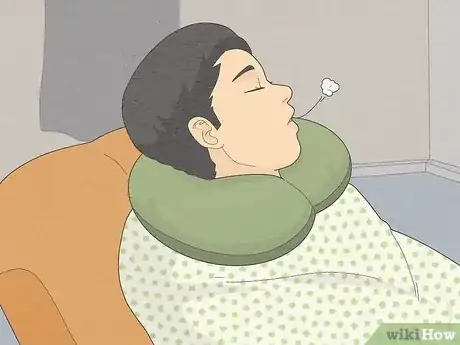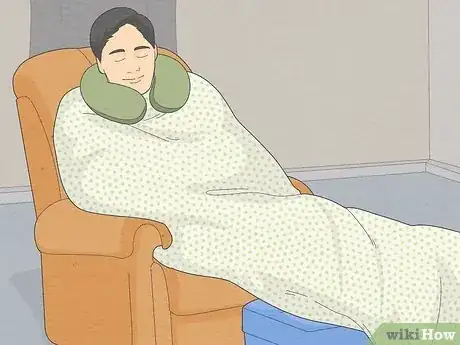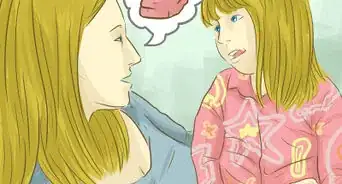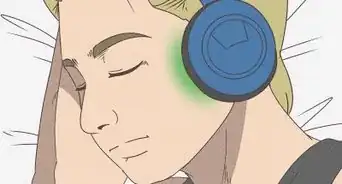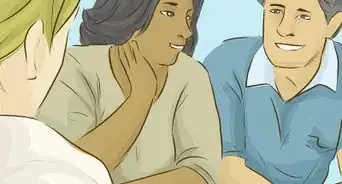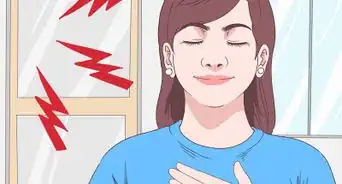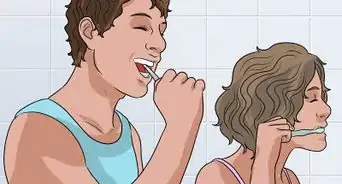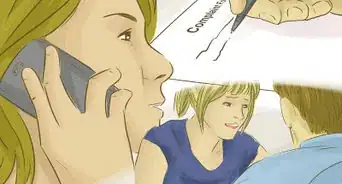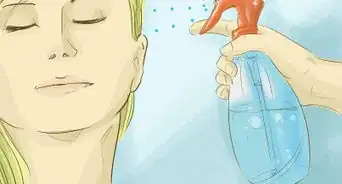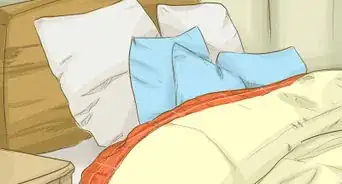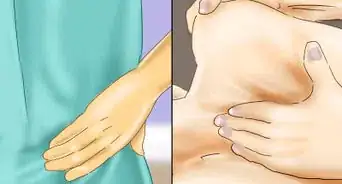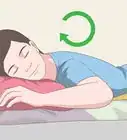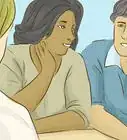This article was co-authored by Alex Dimitriu, MD. Alex Dimitriu, MD is the Owner of Menlo Park Psychiatry and Sleep Medicine, a clinic based in the San Francisco Bay Area with expertise in psychiatry, sleep, and transformational therapy. Alex earned his Doctor of Medicine from Stony Brook University in 2005 and graduated from the Stanford University School of Medicine's Sleep Medicine Residency Program in 2010. Professionally, Alex has dual board certification in psychiatry and sleep medicine.
There are 8 references cited in this article, which can be found at the bottom of the page.
This article has been viewed 138,453 times.
When you are trying to sleep and a bed is not available, you can gain necessary rest while sleeping on a chair. To have a restful night, try to create an atmosphere conducive to sleeping. You can optimize sleeping on a chair with proper room preparation, supplies, and relaxation tools and techniques.
Steps
Preparing Your Sleep Site
-
1Find an appropriate chair. Easy chairs and recliners offer high backs and arms to support your neck and back and allow you to settle in comfortably. Having a chair with enough room to switch positions or shift your body during the night will also help you sleep better.
-
2Elevate your feet. Use an ottoman, stool, chair, or coffee table to keep your feet off the floor. Put a pillow under your feet for extra support. Keeping your legs elevated helps prevent leg cramps and poor circulation.
- If you are unable to elevate your legs, wear compression socks to prevent blood clots.[1]
Advertisement -
3Collect bedding. Gather blankets to keep you warm during the night, a time when your body temperature naturally drops.[2] Larger blankets that cover your entire body will help keep you warm. Find pillows that can support your neck, back, and legs. U-shaped travel neck pillows are a comfortable option for supporting your neck.[3]
-
4Make the room dark and quiet. Close the curtains and turn out the lights. Turn off televisions, computers, tablets, or phones. By creating a "nighttime" atmosphere, your body will feel like it needs to sleep.[4]
- Closed drapes help you sleep later in the day by preventing the sun from shining through the windows and waking you up early.
- The light from electronic screens sends signals to your brain that it should be awake. It is best to reduce use of these products before bedtime.[5]
- Shutting down your phone completely or turning off its visual and sonic notifications decreases potential light and sound interruptions. Be sure to have a back-up alarm clock if you turn off your phone completely.
- Use ear plugs to negate street noise and/or an eye mask to enhance the room's darkness.
Preparing Yourself to Sleep
-
1Change into loose-fitting clothing. Pajamas are a great option. If you do not have pajamas or another change of clothes with you, make yourself more comfortable by removing items such as belts, ties, or pantyhose. Take off your shoes, jewelry, and remove eyeglasses
-
2Drink a cup of herbal tea or warm milk. A warm drink before bed will help you relax. Warm drinks also help prevent going to bed dehydrated. Having a glass or bottle of water near your chair will help with hydration through the night.
-
3Complete your nighttime hygiene routine. Brush your teeth and floss. Wash your face or if possible, take a shower or hot bath. Preparing for bed with your usual ritual will help you unwind and prepare to sleep.
- When you soak in warm water, your temperature rises. The cool down period following a bath or shower relaxes you.[8]
Falling Asleep on a Chair
-
1Cover yourself with a large blanket. Depending on the temperature of the room, choose a blanket that keeps you at a comfortable temperature. Consider having a few options for blankets in case the temperature fluctuates. Tuck the blanket over your shoulders, around your body, and under your legs and feet to prevent drafts.
-
2Support your head with your pillow. Choose a pillow that will stay in place and provide support for your neck. If a pillow is unavailable, consider using a rolled-up sweatshirt or towel. Aim for both comfort and support in choosing pillows.
-
3Try the 4-7-8 breathing technique. Controlled breathing allows you to focus on the moment and clear your head. The extra oxygen acts as a "natural tranquilizer for the nervous system." This breathing exercise can lull you to sleep.
- Exhale completely through your mouth while making a "whoosh'" sound.
- Close your mouth and inhale through your nose to the count of four.
- Hold your breath to the count of seven.
- Exhale completely through your mouth with the "whoosh" sound for eight seconds
- Inhale again and repeat the cycle three times.[9]
-
4Stay relaxed. If you cannot fall asleep immediately, do not become anxious. Continue slow, controlled breathing and try to keep your eyes closed. Focus on relaxing each muscle and resting your body and mind.
- If you still can't fall asleep after 20 minutes, get up and do a relaxing activity, like reading a book, and then try again.[10]
References
- ↑ http://www.dailymail.co.uk/health/article-109065/Ten-steps-healthy-legs.html
- ↑ http://www.ncbi.nlm.nih.gov/pubmed/9322266
- ↑ http://www.wsj.com/articles/SB10001424127887323539804578264243240244364
- ↑ Alex Dimitriu, MD. Sleep Specialist. Expert Interview. 16 October 2019.
- ↑ http://sleepfoundation.org/ask-the-expert/electronics-the-bedroom
- ↑ http://www.bbcgoodfood.com/howto/guide/eat-right-sleep-tight
- ↑ http://www.bbcgoodfood.com/howto/guide/eat-right-sleep-tight
- ↑ http://www.health.com/health/gallery/0,,20462696_2,00.html
- ↑ http://www.dailymail.co.uk/sciencetech/article-3067526/Can-t-sleep-4-7-8-breathing-technique-claims-help-nod-60-SECONDS.html
- ↑ Alex Dimitriu, MD. Sleep Specialist. Expert Interview. 16 October 2019.
About This Article
If a bed isn’t available, there are some techniques you can try to get a good night’s rest on a chair. If the chair doesn’t recline, elevate your feet on an ottoman, stool, or another chair, which will prevent your legs from getting stiff. Use as many blankets as you can to help keep yourself warm during the night. If you have a U-shape travel pillow, use this to keep your head and neck comfortable. You might also place a pillow behind your back and underneath your legs to make the chair softer. To learn how to stay relaxed while sleeping in a chair, read on!

